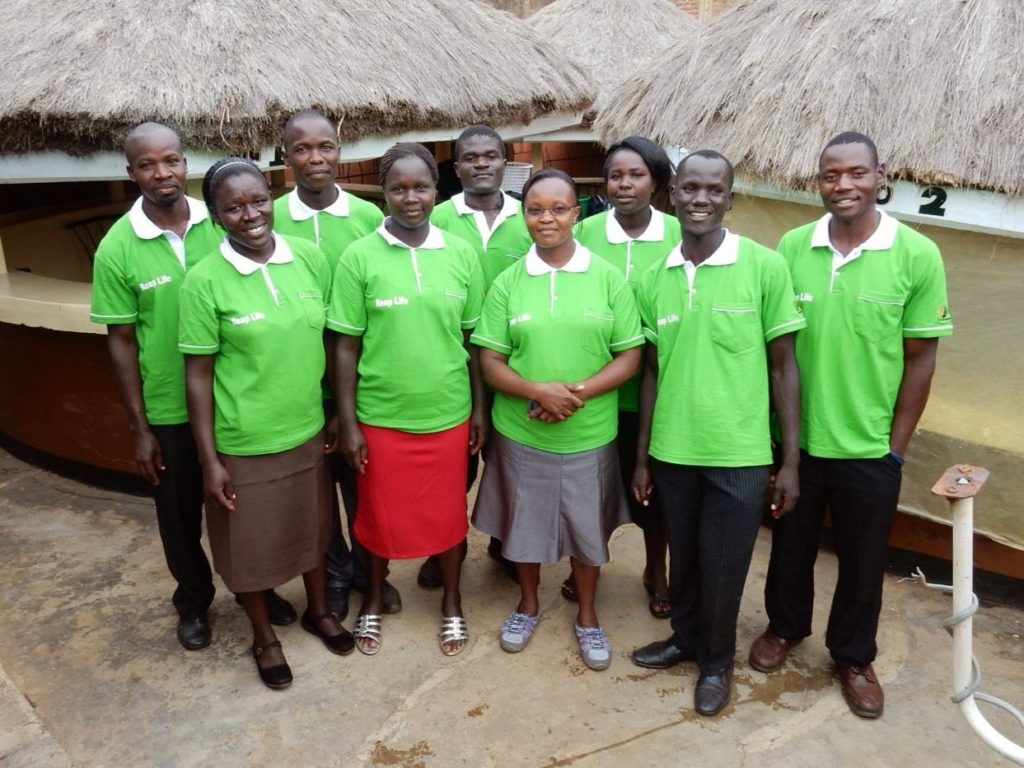By: Maggie Black, an independent writer on issues of international development Today, nearly one billion people in the world go hungry on a daily basis. In Africa, the figure is around 240 million. This is a cause of international outcry – when it tips over into starvation and famine. But the day-to-day problem is rarely examined from the perspective of those whose cooking-pots and eating bowls are half-empty, whose stomachs constantly cramp, who look and feel dull, listless and out of sorts. Often international efforts against hunger focus on the ‘green revolution’, arresting the desert’s advance, higher yields of maize and rice, land management by huge agro-corporations, or genetic modification. But the actual food on the plate of a typical hungry African, Asian, or South American, they rarely know anything about. How can people’s nutritional intake be improved if we don’t start from what they eat? Because they do eat. The problem is that they don’t eat enough, especially in the lean period before the next harvest – the ‘hunger season’ as it is known in Western Kenya and many other places. Going hungry or under-fed is not the same as starving. It often means eating only one meal a day, and that meal consists of unappetizing maize-meal porridge with a handful of chopped green kale leaves. These leaves are known as sukuma wiki, meaning ‘push through the week’. With no dairy produce and meat only eaten at feasts, the sukuma wikiand an occasional fish, eggs or bananas are the only sources of protein and vitamins.This is not a diet for building healthy bodies or minds. And when human labour is the only kind of labour used in the fields, and physical strength is needed to dig, plant, weed and harvest, it is a diet that perpetuates under-nutrition from parent to child.
The painful irony of this situation is that it is unnecessary. The landscape of Western Kenya is crowded and verdant by most African standards. Smallholders, growing four acres of sugar or maize for cash, often have a spare acre which, in the dry season, sits about doing nothing. Their agriculture is rain-fed. So they only prepare the soil when rains are coming. But there are lots of streams, and near Lake Victoria, groundwater is not far below the surface. Why not put it to use? Two US-based NGOs, Development in Gardening (DIG) in partnership with Lwala Commnity Alliance (LCA), have begun to galvanize local communities in Rongo District to take up vegetable gardening to aid both their health and their wealth. DIG began at Lwala Community Hospital, where spare land in the compound was used to grow nutritious food for HIV patients and others whose recuperation depended on a better diet. DIG then extended invitations to others living locally to learn sustainable gardening using low-cost organic methods. Some of the plant varieties they grow are strange to an outsider: bushy amaranth with a tiny grain, green-leafed moringa, and equally protein-rich pigeon peas which flower in the dry season. Others are entirely new to them: beetroot, carrots and capsicum, for example. All are grown 250 miles away in Central Kenya, but have never been seen here before. All the facilitators spreading DIG wisdom today have been recruited from those who did well on the course at Lwala. As in any scheme, some people adopt more enthusiastically than others. Most who have done so are women, Africa’s traditional vegetable growers and sellers. Hellen Omingo is typical. A widow, she needs extra money to complete her daughter’s secondary education. By growing two acres of dry-season kale (sukuma wiki) and selling it to her school, she has managed not only to offset her daughter’s fees but make a profit. Now she has bought a cow.
All the women adoptees comment on how much better they eat, as well as on the extra boost to their income. In the past, meals were not only too few but very monotonous. The idea of culinary variety is novel. ‘With a mixture of foods, you feel good,’ says Pamela Otieno. ‘Instead of just eating to fill your stomach, with all these new and healthy ingredients, meals become a joy.’ Rugina Abok, who is HIV positive and was advised to upgrade her diet, agrees. ‘Now I have the vitamins!’ she says. ‘I suffer from fewer diseases – the vegetables have added to my strength. Before, I could not afford to eat more than once a day.’ Her husband Joseph, also HIV positive, has grasped the commercial possibilities. ‘It never occurred to me before that vegetables might bring in money,’ he says. This is a welcome change from the once-a-year payments on sugar cane and maize, at the mercy of the market. In a typical month, the Aboks now make KSh.9,000 ($100) from regular orders and ‘farm gate’ sales. This has transformed their household economy. Introducing new dietary ideas to rural women used to be common decades ago and was known as ‘applied nutrition’. For reasons of aid fashion, it disappeared. As a result, unnecessary hunger continues in rural homes all over Western Kenya and similar environments, simply for want of basic gardening knowledge. Agriculturalists too often look at the big picture, not at the smallholder family, still less at what they grow, what they eat and how simple it would be for them to eat better.
The re-discovery of food – helping people add to what is already on their plates – as a way in to address hunger and under-nourishment is long overdue. But it cannot be done by some ‘big bang’ approach. It will take time for more people to understand the nutritious value of cow-peas, the tastiness of carrots, and the income potential of flourishing sukuma wiki. But once the seed is germinated, such obviously potent ideas take off. Food, after all, has a lot to recommend it.


